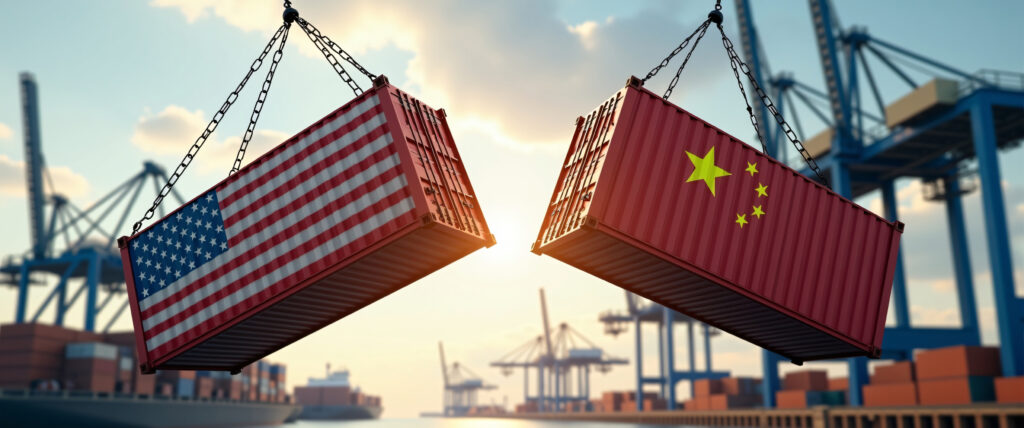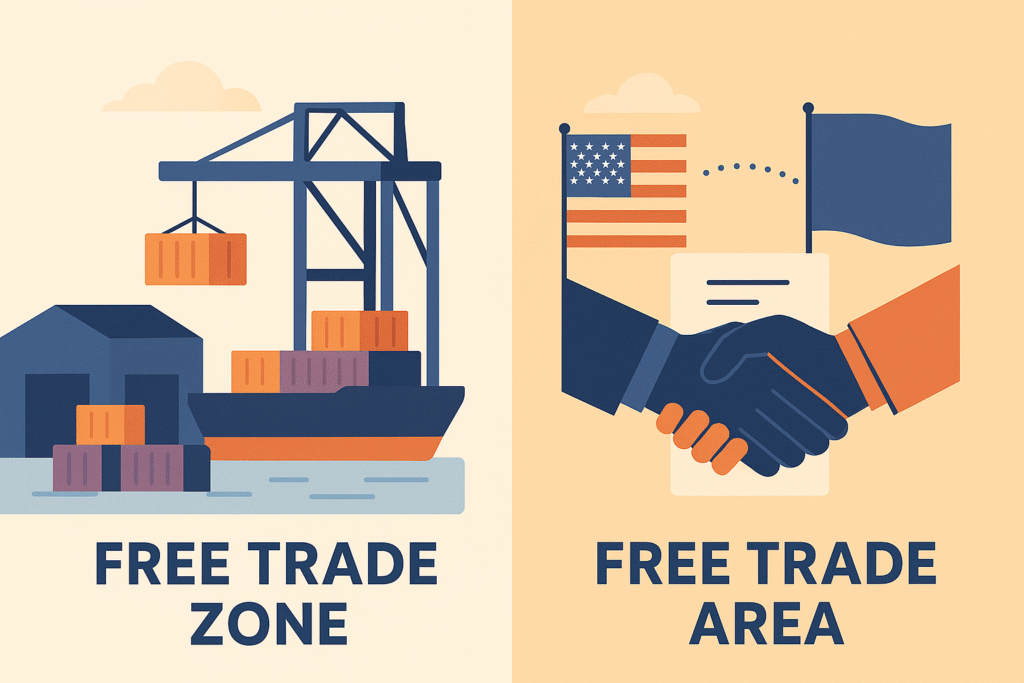Nearshore News: U.S. Reshoring Grows, Medtech Bets on Nearshoring, and Portugal Gains Momentum as a Production Hub

As trade policy continues to reshape global manufacturing, fresh data and new investments point to a growing emphasis on localization and resilience. In the U.S., reshoring hit record levels in 2024 and General Motors is investing billions to shift production stateside. The medtech sector is also doubling down on nearshoring to improve compliance and speed. Meanwhile, Portugal is emerging as a standout for fashion brands seeking quality and agility in a turbulent trade environment. Together, these moves reflect a broader realignment of production strategy—from cost-cutting to control.
Nearshore News Summary:
- The Reshoring Initiative’s 2024 Annual Report reveals 244,000 U.S. manufacturing jobs were announced last year, with high-tech industries leading the charge. While early 2025 projections suggest a slowdown, stable industrial and tariff policy could reignite investment (Quality Magazine)
- General Motors will invest $4 billion in U.S. manufacturing (CNBC)
- Nearshoring becomes a strategic advantage in the medtech sector (Medical Product Outsourcing)
- Portugal gains favor as a production hub due to Portugal’s skilled labor, fair pricing, and willingness to support brands (Vogue Business)
Reshoring Initiative Releases 2024 Annual Report
Published: June 11, 2025
Source: Quality Magazine
The Reshoring Initiative’s 2024 Annual Report reveals 244,000 U.S. manufacturing jobs were announced last year due to reshoring and foreign direct investment (FDI), with high-tech industries leading the charge. While early 2025 projections suggest a slowdown, stable industrial and tariff policy could reignite investment. The report calls for long-term strategies to address cost disadvantages and workforce shortages if the U.S. hopes to maintain momentum in rebuilding domestic manufacturing.
Key points:
- Record Reshoring from U.S. Companies: U.S.-based firms reshored more jobs than foreign investors for the first time on record, with 244,000 jobs announced in 2024.
- High-Tech Industries Dominate: Sectors like computer & electronics, EV batteries, solar, and transportation equipment accounted for 88% of new manufacturing jobs.
- Tariffs Now a Key Driver: Tariffs were cited 454% more often in 2025 as a reshoring motivator, while reliance on government incentives dropped sharply as subsidies phased out.
- Workforce and Cost Challenges Persist: Skilled labor shortages and manufacturing costs that remain 10–50% higher than overseas continue to limit broader reshoring potential.
- Urgent Call for Policy Action: The report advocates for workforce investment, currency realignment, smarter use of tariffs, and adoption of Total Cost of Ownership tools to sustain reshoring growth.
GM to invest $4 billion in U.S. plants amid tariffs for Mexican-produced vehicles
Published: June 10, 2025
Source: CNBC
General Motors will invest $4 billion in U.S. manufacturing, relocating production of the gas-powered Chevrolet Blazer from Mexico and expanding U.S. production of the Chevrolet Equinox. The move comes as a strategic response to President Trump’s new tariffs on imported vehicles and parts, and is being celebrated by both the White House and the United Auto Workers union as a victory for American jobs and industrial policy.
Key points:
- $4 Billion Investment in U.S. Plants: GM will invest $4B in three U.S. assembly plants, including revamping an idled Michigan factory to build gas-powered SUVs and trucks starting in 2027.
- Production Shift from Mexico: Blazer production will fully move from GM’s Ramos Arizpe plant in Mexico to the U.S., while Equinox production will expand in both U.S. and Mexico.
- Response to Trump’s Tariffs: The move aligns with the 25% tariffs on imported vehicles and parts introduced in April and May 2025, which GM has been evaluating closely in recent months.
- Union Support for the Shift: UAW President Shawn Fain praised GM’s decision as a win for U.S. manufacturing and workers, crediting the tariffs for ending the “race to the bottom.”
- Slower EV Rollout Signals Shift in Strategy: GM will pause its plan to make the Michigan Orion plant EV-exclusive, pivoting instead toward profitable gas-powered vehicle production amid uncertain trade conditions.
Nearshoring in the Medtech Markets
Published: June 11, 2025
Source: Medical Product Outsourcing
In response to geopolitical shifts, evolving regulations, and increasing demand for localized service, nearshoring has become a strategic advantage in the medtech sector. By positioning manufacturing closer to key markets, OEMs and their contract design manufacturing (CDM) partners can enhance agility, collaboration, regulatory compliance, and sustainability, while reducing costs and supply chain risks.
Key points:
- Localization & Regionalization on the Rise: Nearly 88% of companies are shifting their supply chains toward regionalization to achieve faster delivery, better compliance, and lower logistics costs.
- Four Pillars of Supply Chain Resilience: Nearshoring reinforces supply chain strength by enhancing diversification, localization, visibility, and flexibility—enabling faster adaptation to changing conditions.
- Enhanced Collaboration & Compliance: Proximity enables face-to-face collaboration between OEMs and CDMs, ensuring alignment with local regulations and market preferences.
- Cost & Sustainability Benefits: Nearshoring can reduce logistics costs by up to 25% and significantly cut carbon emissions by minimizing long-distance shipping.
- Agility in a Geopolitical Context: As global uncertainty continues, local manufacturing facilities offer medtech companies the reliability and responsiveness needed to serve customers consistently and competitively.
Navigating Global Production Upheaval
Published: June 12, 2025
Source: Vogue Business
At a Vogue Business and APICCAPS event in New York, brand founders and manufacturing experts discussed how U.S.-based fashion brands are adapting to global production challenges amid trade uncertainty and tariffs. Speakers emphasized flexibility, verticality, and the strategic advantages of producing in Portugal — a rising manufacturing hub thanks to its quality, pricing, and innovation.
Key points:
- Portugal Gains Favor as Production Hub: Both brand founders and APICCAPS highlighted Portugal’s skilled labor, fair pricing, and willingness to support brands as key reasons it's becoming a go-to manufacturing destination.
- Vertical Supply Chains Offer Stability: Designers like Jonathan Cohen emphasized the benefits of verticality — sourcing, embroidery, cut-and-sew all in one location — as a way to improve cost, quality, and efficiency.
- Technology Driving Manufacturing Efficiency: Portugal’s FAIST initiative brings together 60+ partners to innovate in footwear production, leveraging robotics and automation to optimize operations and attract international brands.
- Tariff Pressures Prompt Tactical Planning: Brands are adjusting timelines and order volumes in anticipation of tariff hikes, trying to ship goods before higher duties take effect.
- Flexibility Is Essential in a Volatile Trade Climate: Speakers agreed that the key to navigating today’s shifting trade policies is building production strategies that can adapt quickly to geopolitical and economic changes.
More blogs


